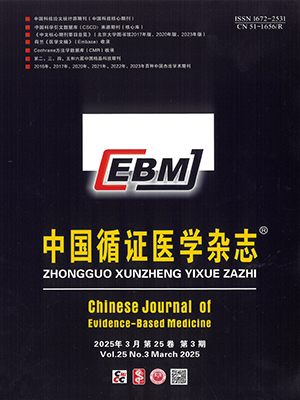Objective To investigate change of bispectral index(BIS) and hemodynamic index during induction and orotracheal intubation of sevoflurane anesthesia.
Methods This study was a prospective before-after study in the same patients. A total of 30 ASA physical status I and II adult patients without airway abnormalities were enrolled to receive inhalation induction of anesthesia with 8% sevoflurane. Mean arterial pressure(MAP),heart rate(HR) and BIS were recorded before anesthesia(T1),when patients loss of consciousness(T2), before intubation (T3),at 1 min(T4) and 3 min(T5) after intubation.
Results BIS at T1-T5 were 96.8±1.7,70.4±8.8,39.2±8.4,43.6±12.9 and 41.6±9.3 respectively, the measurements at T2-T5 were all markedly lower than at T1(P lt;0.05). HR at T3-T5 were all markedly higher than at T1(P lt;0.05). MAP at T2 and T3 were markedly lower than at T1, but at T4 was higher than at T1(P lt;0.05), and recovered to the level at T1 at T5(P gt;0.05).BIS,HR and MAP at T4 were all significantly higher than T3(P lt;0.05).
Conclusion Anesthesia induction with sevoflurane and small dose of succinylchoiline we used can provide adequate depth of general anesthesia,but can not prevent cardiovascular adverse reactions to intubation.
Citation:
HUANG Wei,WANG Jian,LUO Linli,ZHOU Jun. Change of Bispectral Index and Hemodynamic Index During Induction and Orotracheal Intubation of Sevoflurane Anesthesia. Chinese Journal of Evidence-Based Medicine, 2007, 07(12): 869-872. doi:
Copy
Copyright © the editorial department of Chinese Journal of Evidence-Based Medicine of West China Medical Publisher. All rights reserved
| 1. |
Muzi M, Robinson BJ, Ebert TJ,et al. Induction of anesthesia and tracheal intubation with sevoflurane in adults. Anesthesiology, 1996,85(3): 536-543.
|
| 2. |
Ekman A, Lindholm ML, Lennmarken C, et al. Reduction in the incidence of awareness using BIS monitoring.Acta Anaesthesiol Scand, 2004, 48(1): 20-26.
|
| 3. |
Myles PS, Leslie K, Forbes A, et al. Bispectral index monitoring to prevent awareness during anaesthesia: the B-Aware randomized controlled trial. Lancet, 2004,363 (9423): 1757-1763.
|
| 4. |
Guignard B, Menigaux C,Dupont X,et al.The effect of remifentanil on the bispectral index change and hemodynamic responses after orotracheal intubation. Anesth Analg, 2000, 90(1): 161-167.
|
| 5. |
Patel SS,Goa KL. Sevoflurane:A review of its pharmacodynamics and pharmacokinetic properties and its clinical use in general anaesthesia.Drugs,1996,51(4): 658-700.
|
| 6. |
Edwards ND, Alford AM,Dobson PM, et al. Myocardial ischaemia during tracheal intubation and extubation. Br J Anaesth,1994, 73(4) : 537-539.
|
| 7. |
Guignard B,Chauvin M. Bispectral index increases and decreases are not always signs of inadequate anesthesia. Anesthesiology, 2000,2(3): 903-905.
|
| 8. |
El-Orbany MI, Joseph NJ, Salem MR, et al. The neuromuscular effects and tracheal intubation conditions after small doses of succinylcholine. Anesth Analg, 2004,98(6): 1680-1685.
|
| 9. |
Kopman AF,Zhaku B,Lai KS. The “intubating dose” of succinylcholine: the effect of decreasing doses on recovery time.Anesthesiology, 2003,99(5): 1050-1043.
|
- 1. Muzi M, Robinson BJ, Ebert TJ,et al. Induction of anesthesia and tracheal intubation with sevoflurane in adults. Anesthesiology, 1996,85(3): 536-543.
- 2. Ekman A, Lindholm ML, Lennmarken C, et al. Reduction in the incidence of awareness using BIS monitoring.Acta Anaesthesiol Scand, 2004, 48(1): 20-26.
- 3. Myles PS, Leslie K, Forbes A, et al. Bispectral index monitoring to prevent awareness during anaesthesia: the B-Aware randomized controlled trial. Lancet, 2004,363 (9423): 1757-1763.
- 4. Guignard B, Menigaux C,Dupont X,et al.The effect of remifentanil on the bispectral index change and hemodynamic responses after orotracheal intubation. Anesth Analg, 2000, 90(1): 161-167.
- 5. Patel SS,Goa KL. Sevoflurane:A review of its pharmacodynamics and pharmacokinetic properties and its clinical use in general anaesthesia.Drugs,1996,51(4): 658-700.
- 6. Edwards ND, Alford AM,Dobson PM, et al. Myocardial ischaemia during tracheal intubation and extubation. Br J Anaesth,1994, 73(4) : 537-539.
- 7. Guignard B,Chauvin M. Bispectral index increases and decreases are not always signs of inadequate anesthesia. Anesthesiology, 2000,2(3): 903-905.
- 8. El-Orbany MI, Joseph NJ, Salem MR, et al. The neuromuscular effects and tracheal intubation conditions after small doses of succinylcholine. Anesth Analg, 2004,98(6): 1680-1685.
- 9. Kopman AF,Zhaku B,Lai KS. The “intubating dose” of succinylcholine: the effect of decreasing doses on recovery time.Anesthesiology, 2003,99(5): 1050-1043.




